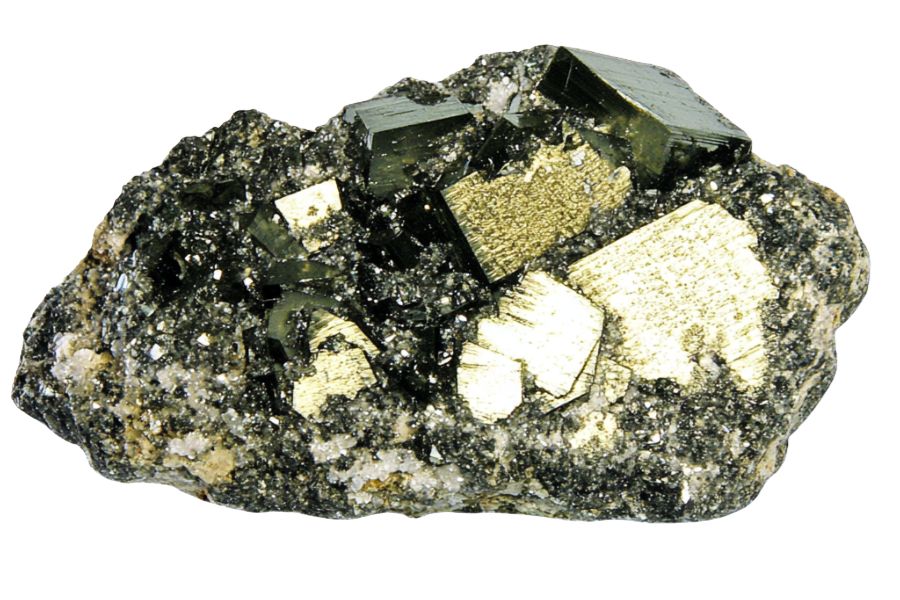California has long been a land of hidden riches, and pyrite is one of its most fascinating finds. Often called “Fool’s Gold,” this mineral isn’t just a glittering trick, it’s a precious collector’s piece, valued for its unique crystal formations and historical significance.
Found near old mining towns and in rugged mountains, pyrite has been sought after for centuries.
But many rockhounds make the mistake of searching in the wrong spots, wandering aimlessly, and leaving empty-handed. They miss out simply because they’re not looking where pyrite naturally occurs.
To make your hunt easier, we’ve sourced the best locations in California where you can find high-quality pyrite. Let’s get you to the right spots so you can start adding these golden treasures to your collection.
Along the way, we’ll give you everything you need to actually find them, and the only other thing worth having is Rock Chasing’s California Rocks & Minerals Identification Field Guide. It keeps you from walking past something valuable or tucking an amazing find into your bag without realizing what it is.
How Pyrite Forms Here
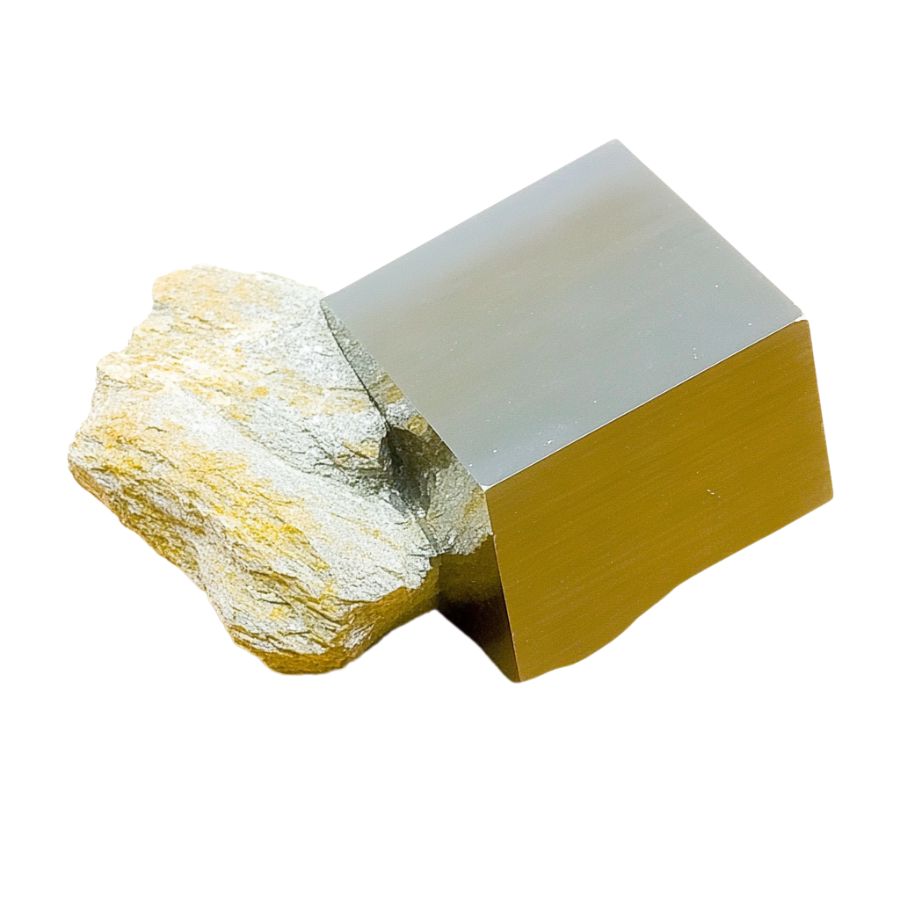
Pyrite forms when iron and sulfur combine in oxygen-poor environments, like deep in ancient seas or swamps.
The magic happens when iron-rich water meets sulfur-producing bacteria – these tiny organisms actually help create the perfect conditions for pyrite to grow!
As the bacteria break down organic matter, they release sulfur, which quickly bonds with the iron. Over time, these elements crystallize into pyrite’s distinctive cubic shapes at fairly low temperatures.
Sometimes, it forms slowly, replacing dead plants or sea creatures bit by bit, preserving their shapes as perfect golden fossils. The more pressure and heat, the bigger and more perfect the crystals become.
Types of Pyrite
Pyrite comes in several distinct forms and shapes, each with its own unique characteristics. Knowing these different varieties will help you identify what you’ve found.
Cubic Pyrite
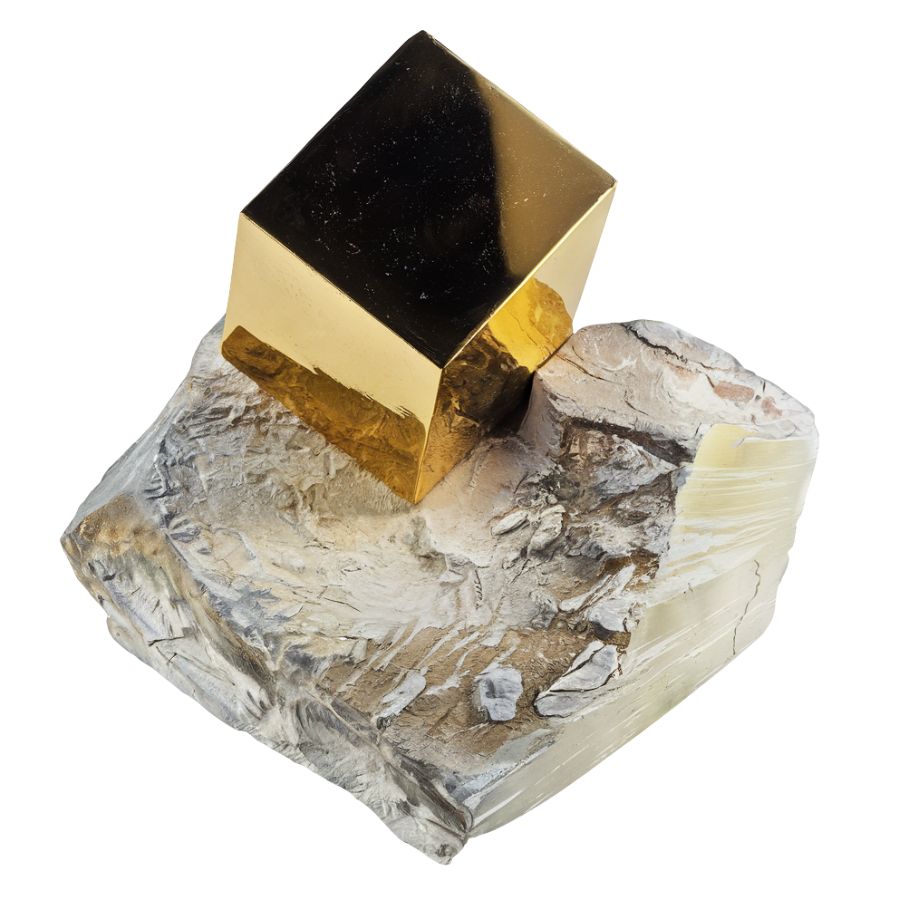
Cubic Pyrite showcases perfect cube-shaped crystals with sharp, well-defined edges and corners. While the classic form is golden, Cubic Pyrite can also appear in shades of brown or green.
What’s fascinating about Cubic Pyrite is how the crystals often cluster together, creating stunning geometric patterns. Sometimes, smaller cubes grow on larger ones, forming complex arrangements that collectors particularly value.
These specimens often develop alongside other minerals, which can create striking contrast effects.
Some pieces display interesting growth patterns where cubes appear to be stacked or intergrown with each other, creating unique architectural-like formations that make each specimen special.
Most people don’t realize how many incredible rocks California hides in its mountains, deserts, and beaches. This guide shows exactly what you’ve been walking past.
🌈 300+ color photos of real California specimens
🪨 Raw + polished examples make identification simple
🏜️ Covers coastlines, gold country, Sierras & more
💦 Waterproof pages built for real outdoor use
Cathedral Pyrite
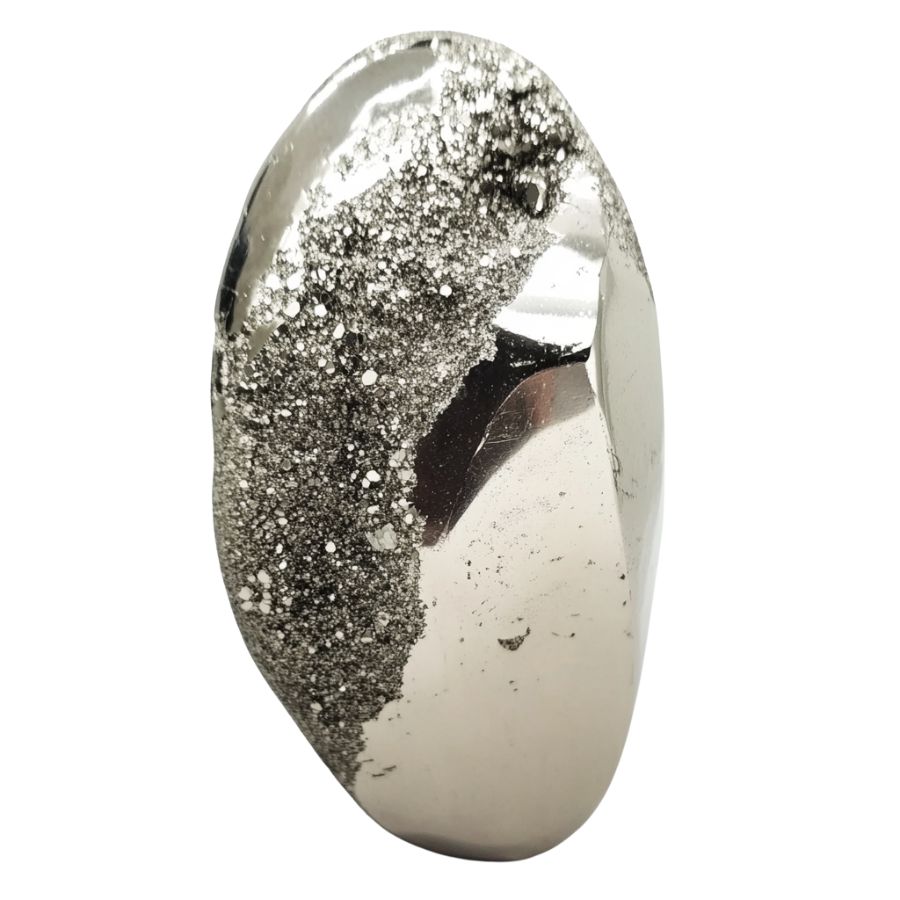
Cathedral Pyrite displays intricate surface patterns that look like delicate etchings or gothic window designs. The surface typically shows a bright, metallic luster that enhances these unique patterns.
It exhibits a combination of cubic and modified dodecahedral forms, which contribute to its unique appearance.
The crystal’s surface features result from natural etching processes during formation. This creates deeper grooves and raised areas that form symmetrical patterns.
Most specimens show variations in the depth and complexity of their etchings. Some areas might have fine, detailed patterns while others show broader, more pronounced features.
Pyrite Sun

Pyrite Sun forms in flat, disc-shaped specimens with radiating patterns that spread from the center outward. These pieces look like metallic sunbursts, with lines extending in all directions.
The radiating pattern is actually made up of countless tiny crystals arranged in a circular formation. This arrangement creates a natural symmetry that makes each piece look like a golden medallion or ancient sun symbol.
These specimens sometimes develop with interesting surface textures. Some pieces show subtle ridges along the radiating lines, while others might have a slightly bumpy texture.
The flat shape of the Pyrite Sun makes it distinctly different from other pyrite formations.
Pyritohedral Pyrite
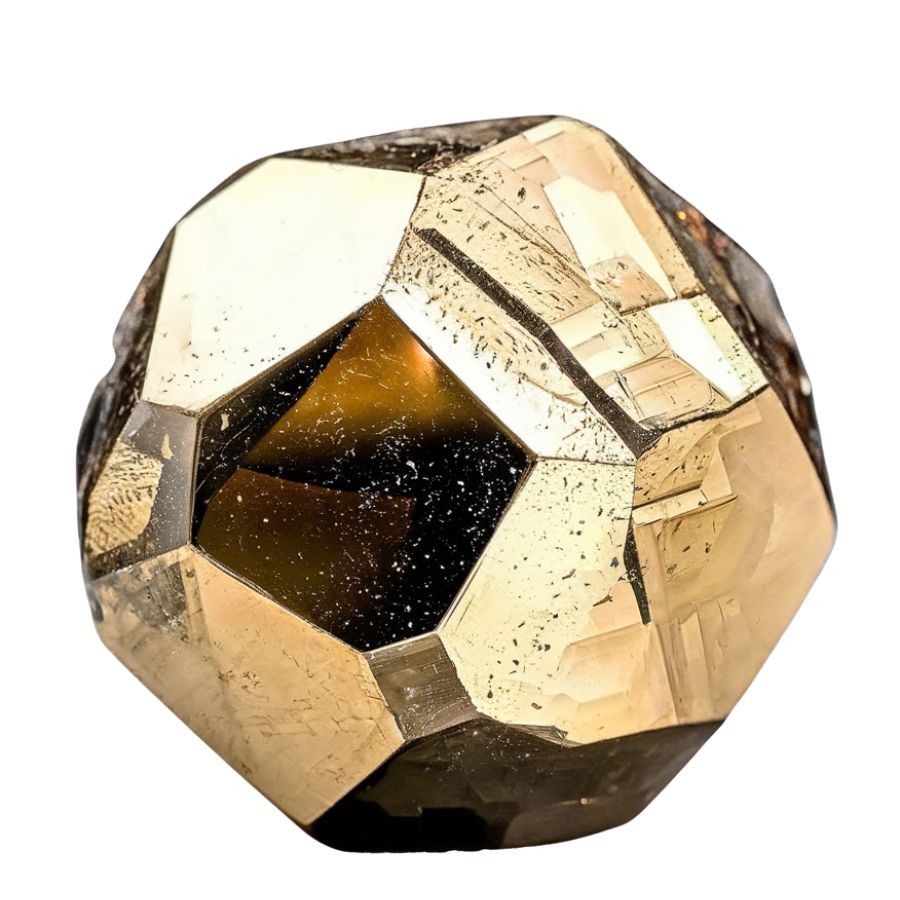
Pyritohedral Pyrite forms in unique twelve-sided shapes called pentagonal dodecahedra. Each face is a perfect pentagon. The crystals show the same bright, metallic golden color typical of pyrite, but in this distinctive shape.
Large single crystals of Pyritohedral Pyrite are particularly impressive. They can form either as individual crystals or in groups, sometimes creating interesting clusters where multiple dodecahedral shapes grow together.
One of the unique aspects of pyritohedral pyrite is its crystallography, which shows striated surfaces conforming to its pyritohedral symmetry.
Additionally, pyrite can form complex intergrowths known as framboids, which resemble raspberry-like clusters, adding to its visual appeal.
Rainbow Pyrite
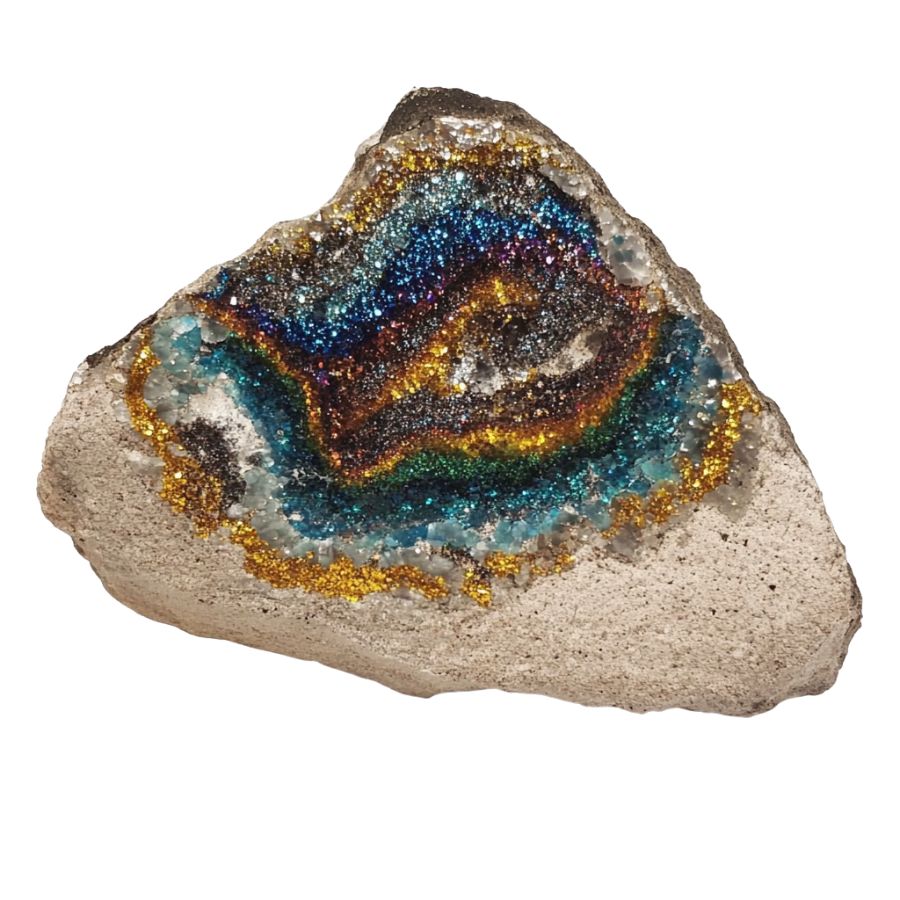
Rainbow Pyrite displays stunning iridescent colors that shimmer across its surface. These colors range from bright blues and greens to purples and pinks, creating a peacock-like effect. The colors change and shift as you move the stone, making each viewing angle unique.
The iridescent effect comes from a thin layer of oxidation on the surface. The base crystal usually maintains its metallic shine underneath these colorful patterns.
The intensity of colors varies between specimens, with some showing bold, vivid hues while others display more subtle tints.
The variability in color and pattern also adds to its allure. Additionally, it is considered a type of druzy, which refers to a layer of tiny crystals coating another rock, further enhancing its desirability among rockhounders.
Navajún Pyrite
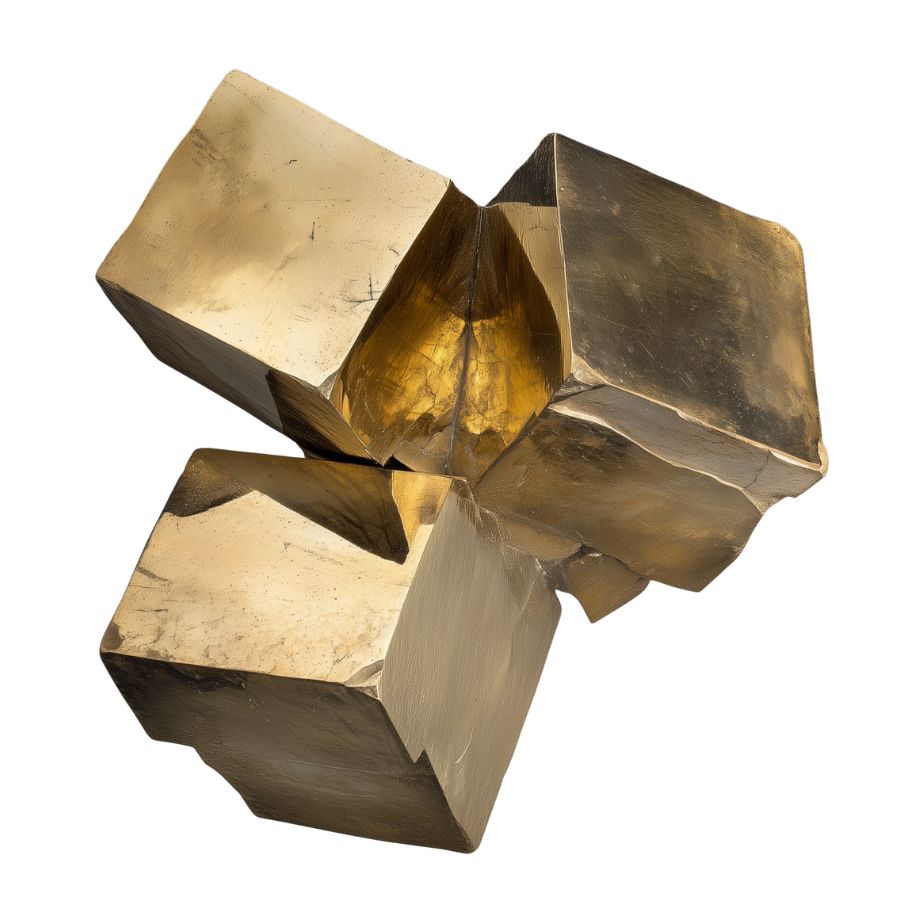
Navajún Pyrite forms perfect, sharp-edged cubes that seem almost man-made in their precision. These cubes have mirror-like surfaces. Their edges are remarkably crisp and well-defined.
The cubes can range from tiny specimens to impressive large crystals several inches across.
The conditions in Navajún have been optimal for millions of years, resulting in some of the largest and most intricate pyrite clusters found globally. The region’s geology allows for a high density of pyrite, with estimates reaching up to 100 kg per cubic meter.
A unique feature is the thin, soft coating that naturally preserves these crystals. This coating helps protect the sharp edges and brilliant surfaces from damage. When carefully removed, it reveals the pristine crystal faces underneath.
Octahedral Pyrite
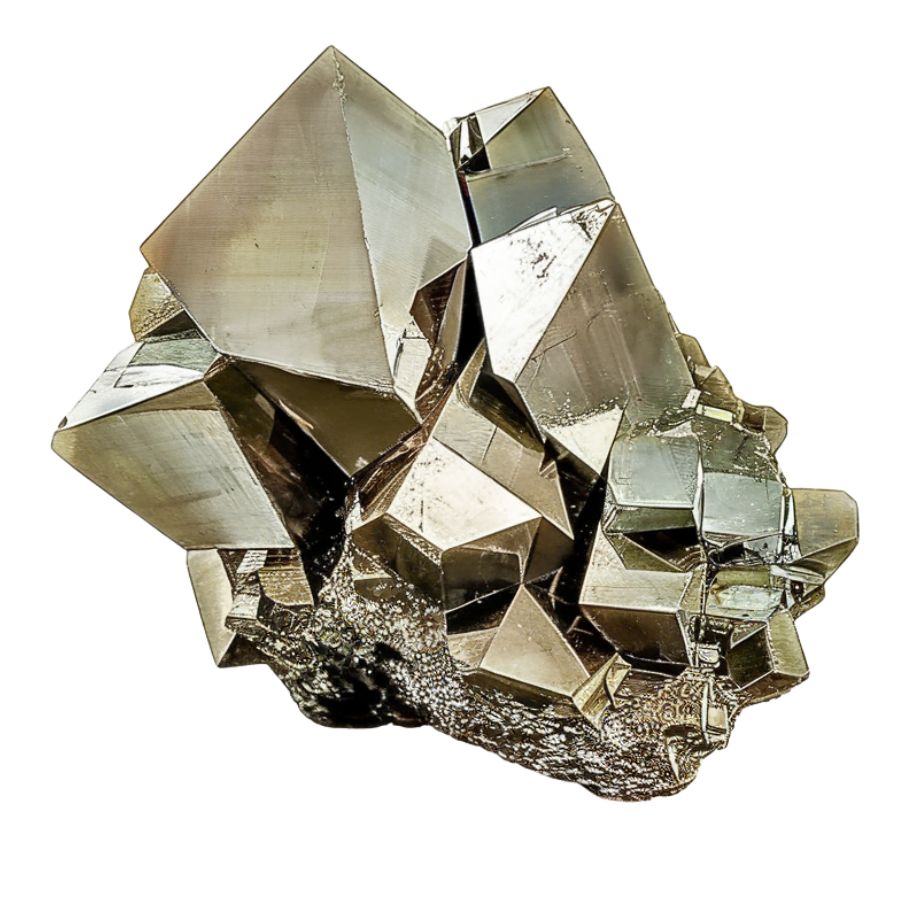
Octahedral pyrite crystals are characterized by their eight triangular faces, which belong to the {111} family of crystal facets. This octahedral form is less common than the cubic shape but is still prevalent in nature.
The faces of these crystals are typically smooth and free from the striations commonly seen on cubic pyrite.
They show a bright, metallic golden color that’s particularly striking when light hits the triangular surfaces. Some crystals develop interesting modifications where additional small faces appear at the edges or corners.
The formation of these octahedral crystals depends on specific growth conditions. Sometimes they combine with other crystal forms, creating more complex shapes that show both octahedral and cubic faces on the same specimen.
Striated Pyrite
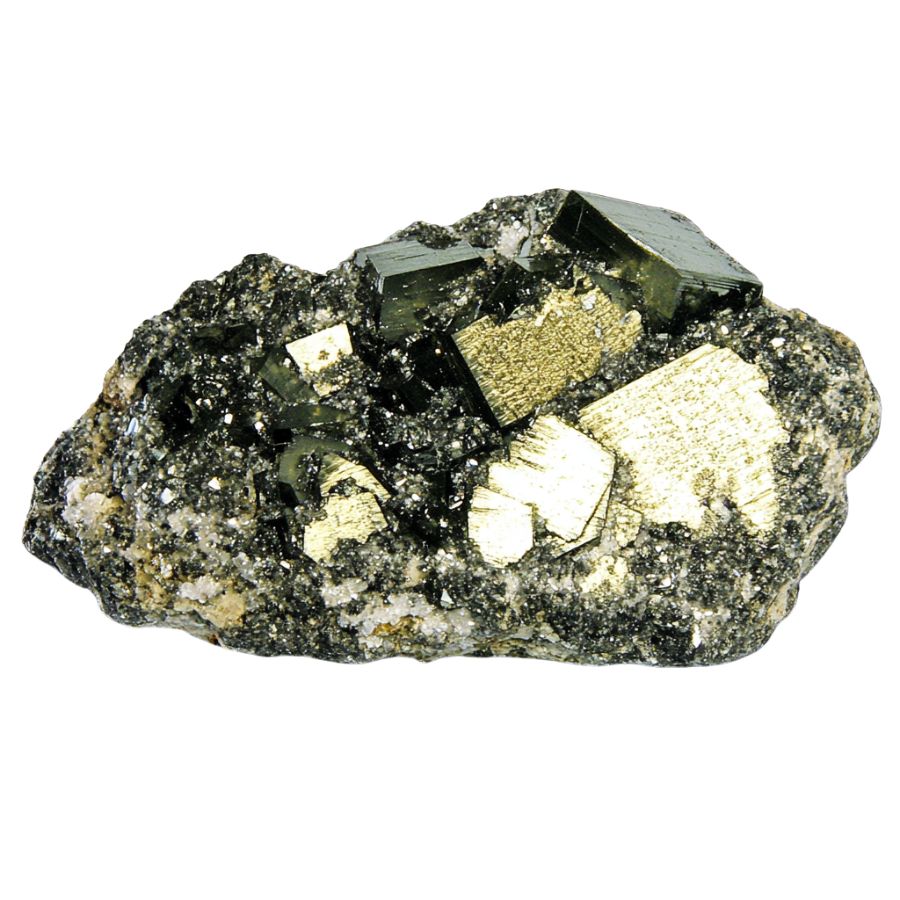
Striated Pyrite features distinctive parallel lines etched across its crystal faces. The lines can be fine and delicate or more pronounced, creating various surface patterns.
It typically forms in well-defined shapes, including cubic, octahedral, and pyritohedral forms.
The striations often run in specific directions on each crystal face. This creates an organized appearance, where the lines on adjacent faces meet at specific angles. The overall effect makes the crystal surface look like it’s been carefully engraved.
Some specimens show multiple sets of striations that cross each other, creating grid-like patterns. The depth and spacing of these lines vary between specimens. The striated surface maintains the crystal’s metallic golden color while adding visual complexity.
What Rough Pyrite Looks Like
Pyrite, often called “Fool’s Gold,” has some distinctive features that make it stand out. Here’s how you can spot rough pyrite even if you’re new to rocks and minerals.
Look for the Classic Brassy-Yellow Color
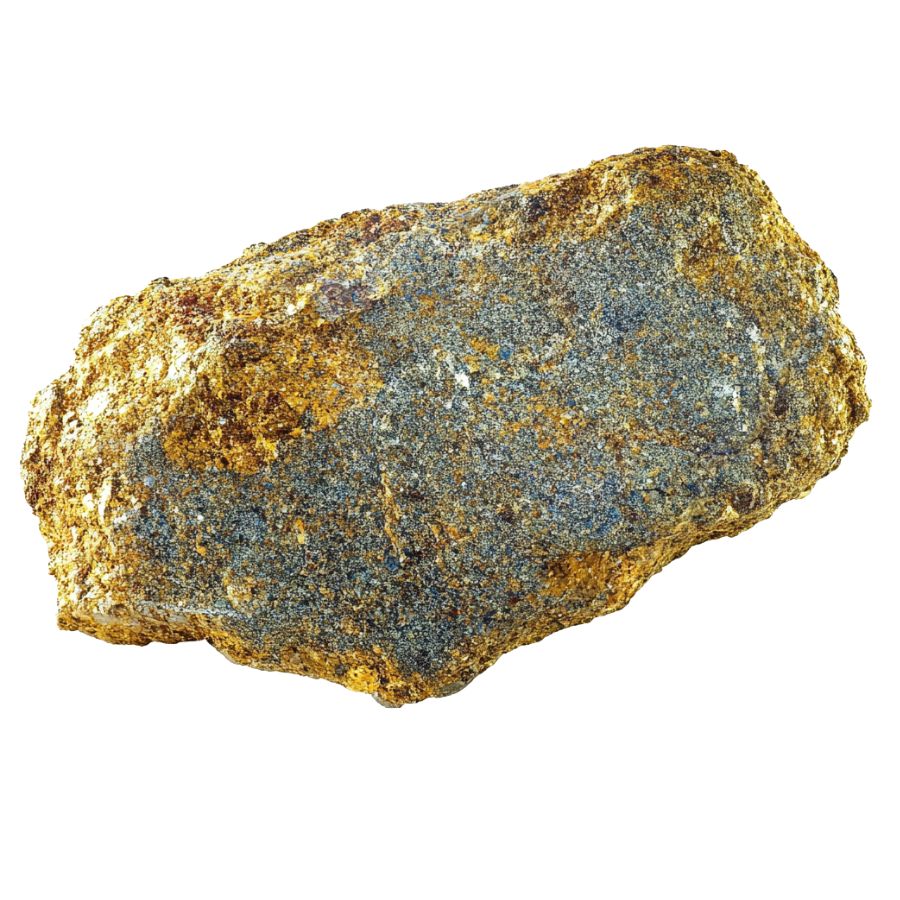
The most obvious giveaway is pyrite’s metallic, brassy-yellow color. But don’t be fooled by its gold-like appearance! Unlike real gold, pyrite has a more pale, silvery undertone.
If you tilt it under light, you’ll notice it’s less warm and rich than genuine gold. Sometimes, it might show tarnish spots with rainbow-like colors – that’s another clue you’re looking at pyrite.
Check the Crystal Structure
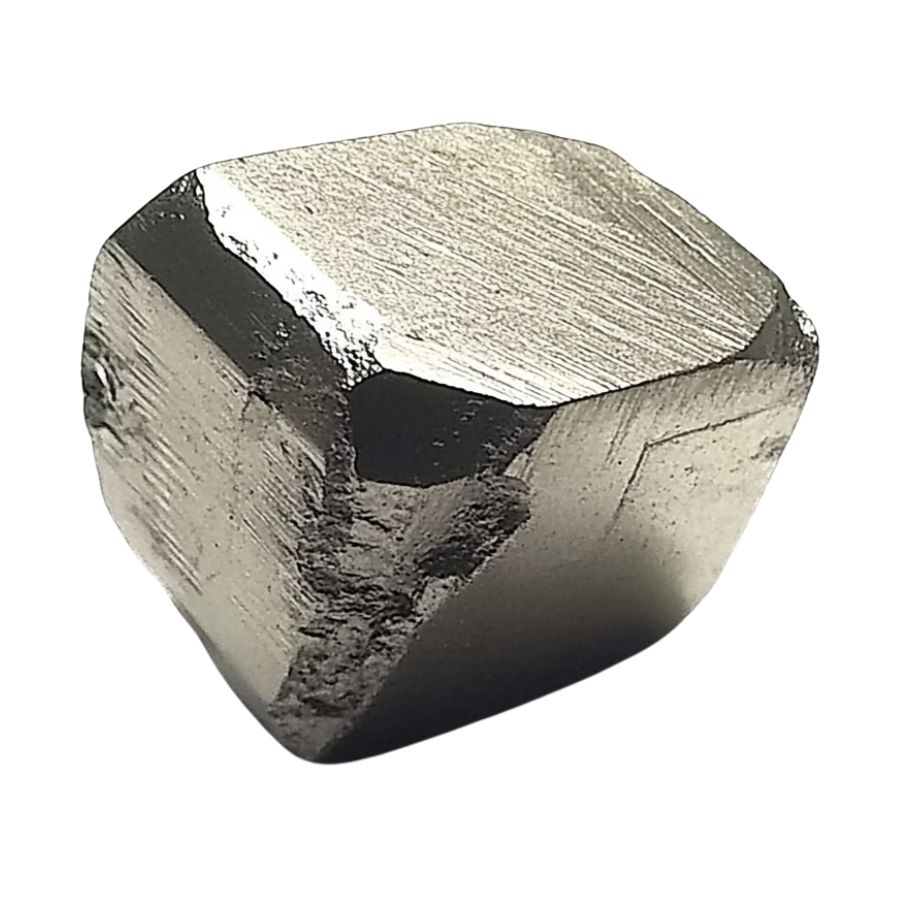
Raw pyrite typically forms in cubic or octahedral shapes – think dice-like cubes or eight-sided formations.
Even in rough chunks, you can spot these geometric patterns. Look for flat surfaces meeting at sharp angles.
Sometimes, you’ll see striations (parallel lines) on the crystal faces, which is super characteristic of pyrite. Gold never forms such crisp, angular shapes.
Test the Hardness and Brittleness

Here’s a cool trick: try scratching pyrite with a nail. Unlike soft gold, pyrite’s pretty hard (6-6.5 on Mohs scale) and will resist scratching.
It’s also brittle – if you manage to break a piece, it’ll have an uneven, jagged fracture. Gold, on the other hand, is soft and malleable, more likely to bend than break.
Examine the Surface Texture
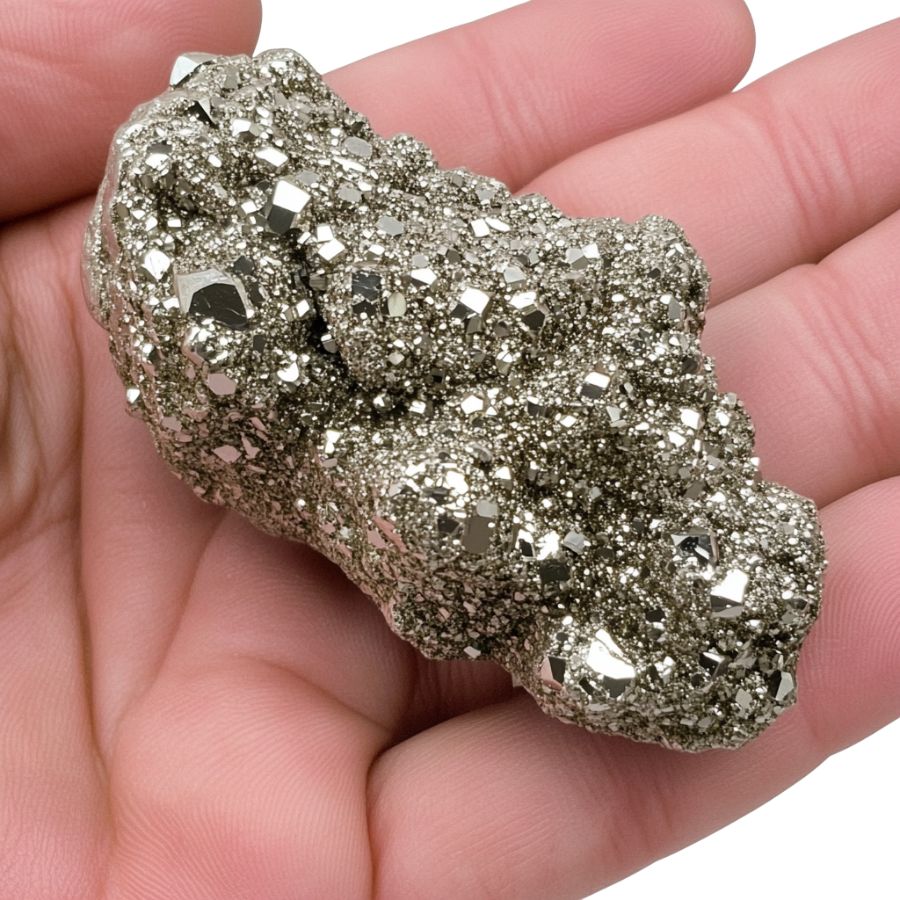
Run your fingers over rough pyrite. Feel those sharp edges and rough surfaces? That’s typical. Look for a surface that’s almost sparkly. Fresh breaks often reveal a bright, metallic luster.
Sometimes you’ll spot tiny crystal faces catching light from different angles – kind of like miniature mirrors reflecting sunlight.
Tips on Where to Look
Pyrite is pretty common and can be found in many places. Here are some locations where you’re likely to spot these shiny golden cubes.
Sedimentary Rock Areas
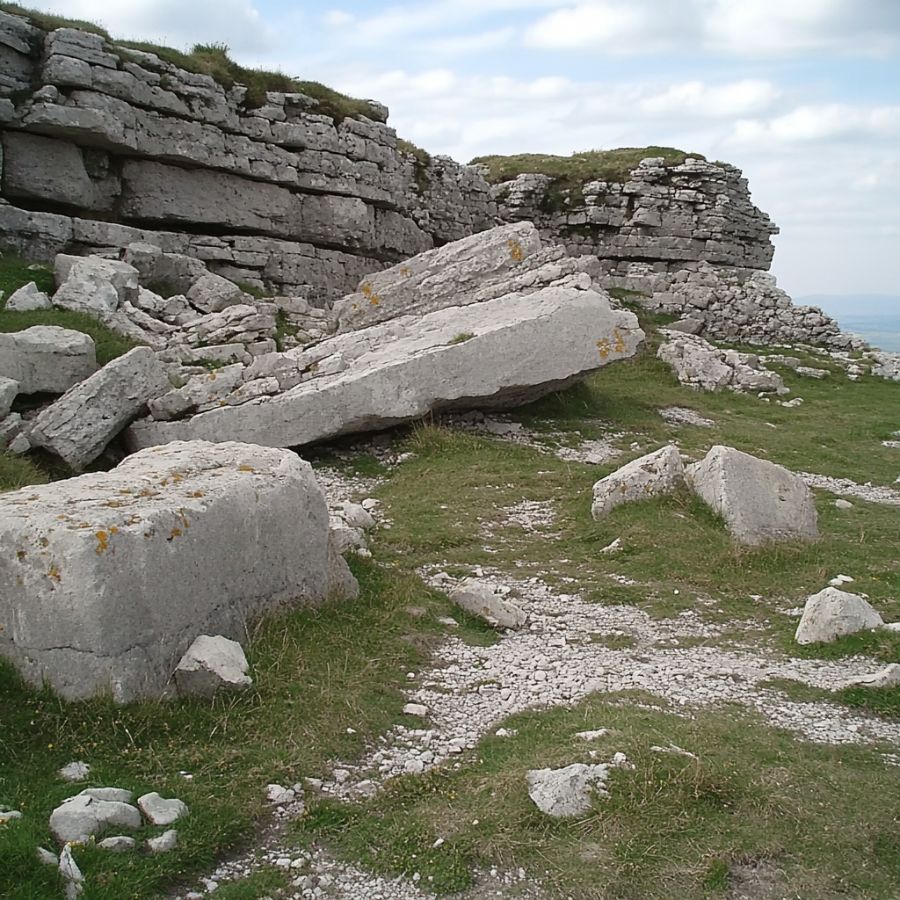
Look for dark shale or limestone outcrops. These rocks often have pyrite chunks embedded in them. Check cliff faces and road cuts where these rocks are exposed. The darker the sedimentary rock, the better your chances.
Sometimes, you’ll find perfect little cubes just sitting there in the rock matrix, waiting to be discovered after millions of years of formation in these ancient sea beds that have transformed into solid rock formations over time.
Old Mining Sites
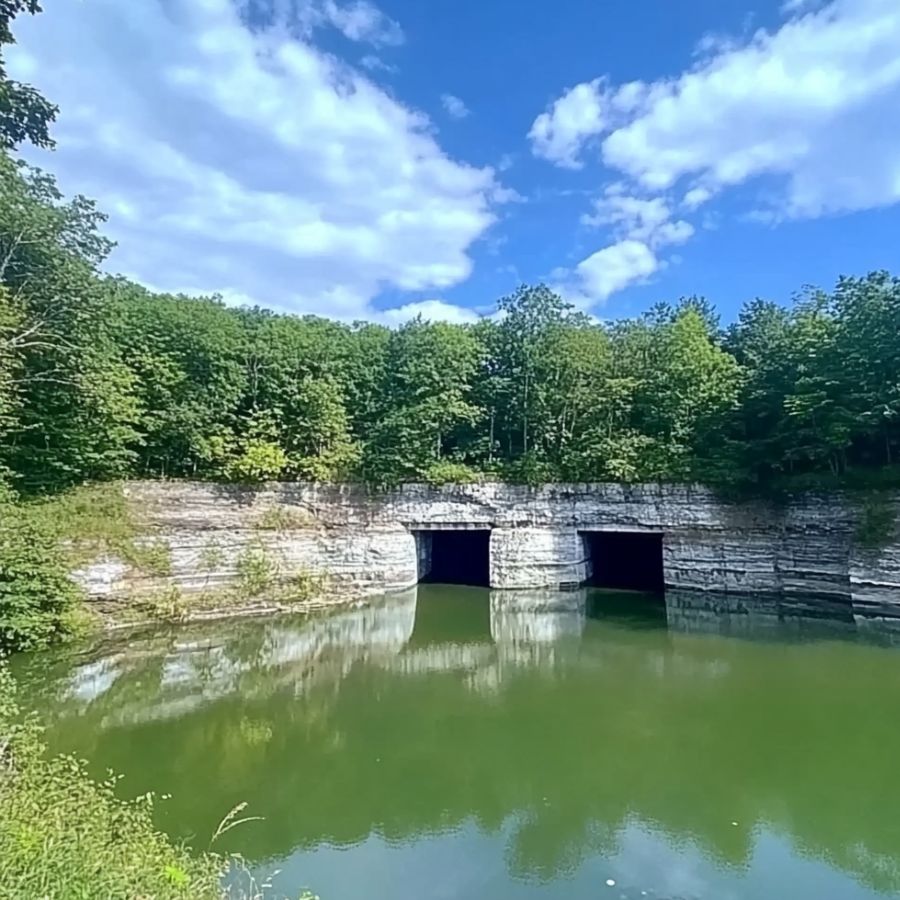
Search around abandoned quarries that are open to the public. Focus on areas where they mined coal or metal ores. Pyrite often shows up in mine dumps and tailings piles.
Look through the scattered rocks – pyrite’s metallic shine makes it easy to spot. Bring a spray bottle with water to wet rocks. Makes pyrite stand out better.
Stream Beds
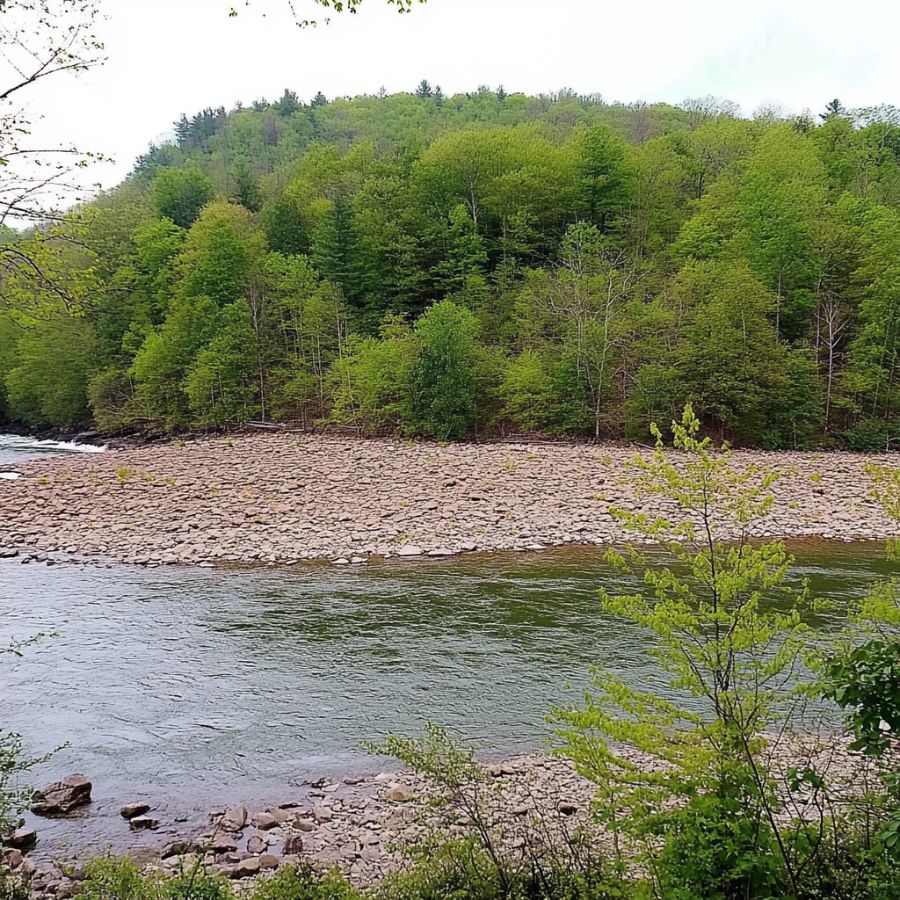
Check gravel bars in streams. Look where water slows down. Dark sand patches often contain tiny pyrite bits. Dig a few inches deep in stream gravels.
Use a gold pan – pyrite is heavy and sinks like gold. Best after rain when fresh material gets exposed.
Clay Banks
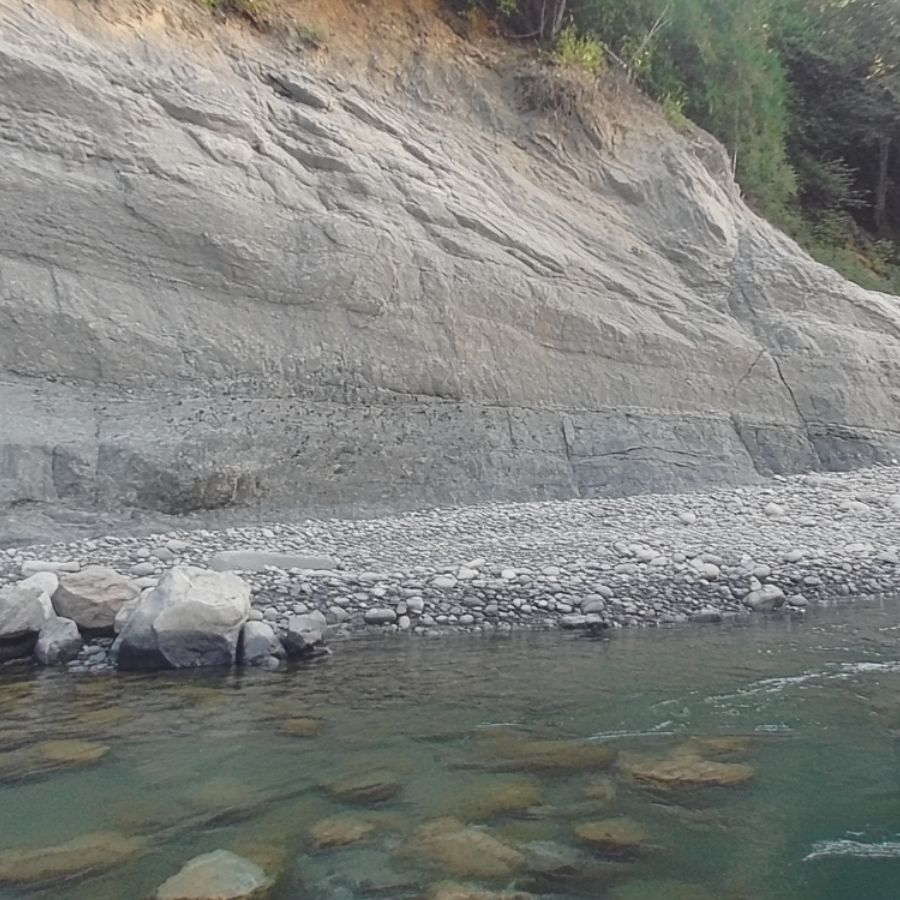
Hunt along eroded clay banks. Pyrite forms in clay deposits. Check areas where clay is gray or blue. Break open clay chunks – pyrite forms inside.
Look for rusty stains – good indicator. These spots often have pyrite crystals weathering out of the clay. Easier to spot on sunny days when crystals glitter.
Tools You Will Need
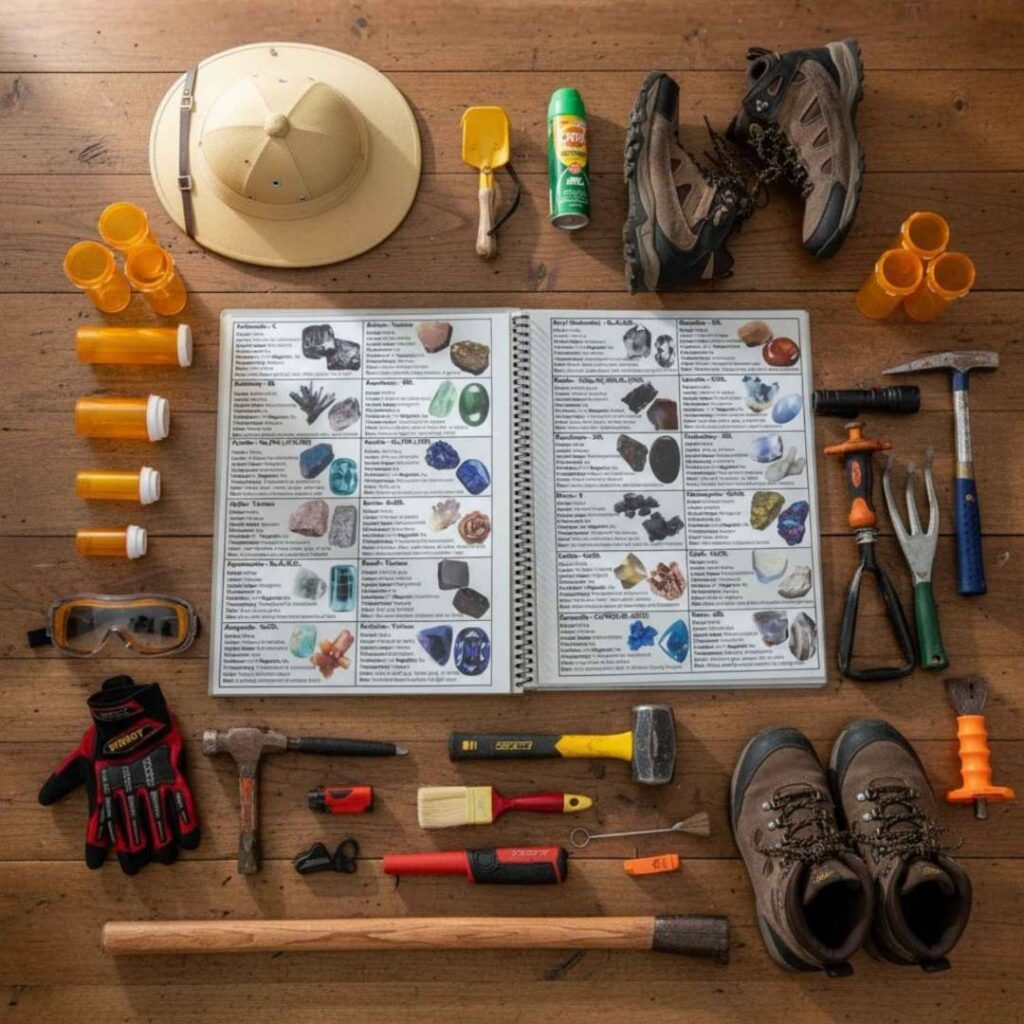
Hunting for pyrite is exciting because those shiny gold cubes can hide in all kinds of places. You don’t need much gear to get started, but a few simple tools make your search a lot easier and help you spot the good pieces. These essentials keep things safe, fun, and beginner friendly.
A Dependable Field Guide – Essential
Rock hounds know how frustrating it is to spot something interesting, only to second-guess what they’re looking at. This guide cuts through that uncertainty with clear photos, simple visuals, and quick-reference facts that make identification fast and stress-free.
Rock Chasing’s California Rocks & Minerals Identification Field Guide includes more than 120 California specimens and over 300 photos, so you can match what you’re holding to what’s on the page in seconds.
Its rugged build is another reason it earns a permanent spot in any pack. Every page is laminated, waterproof, and easy to clean, and the steel binding holds up to creek beds, quarry shelves, and the kind of mud that usually ruins a book.
Collectors appreciate the accurate data and detailed images, and beginners like how approachable it feels. Kids can follow along with the bright photos and fun facts, and adults can use it to label finds with confidence.
Small Geologist’s Hammer – Essential
A small geologist’s hammer helps you loosen chunks of rock so you can reach pockets where pyrite forms. Its pointed end lets you chip around the edges without breaking the crystals inside. Beginners like it because it gives good control without needing much strength.
Safety Glasses – Recommended
When you tap or chip at rocks, tiny pieces can fly toward your face. Safety glasses protect your eyes without getting in the way of your search. They are lightweight and easy to forget you’re wearing, which makes them a smart addition to your kit.
Soft Brush – Essential
A soft brush helps clear dirt or dust from the surface of a rock so you can see whether pyrite is hiding inside. It also keeps delicate crystals from getting scratched. Most people find they use it constantly once they have one.
Small Container or Pouch – Optional
A small container or pouch keeps your best finds from bumping into each other. Pyrite can chip if it rattles around in a pocket, so a simple pouch keeps everything safe. It’s not required, but collectors usually appreciate having one once they start finding good pieces.
Some Great Places To Start
Here are some of the better places in the state to start looking for Pyrite:
Always Confirm Access and Collection Rules!
Before heading out to any of the locations on our list you need to confirm access requirements and collection rules for both public and private locations directly with the location. We haven’t personally verified every location and the access requirements and collection rules often change without notice.
Many of the locations we mention will not allow collecting but are still great places for those who love to find beautiful rocks and minerals in the wild without keeping them. We also can’t guarantee you will find anything in these locations since they are constantly changing.
Always get updated information directly from the source ahead of time to ensure responsible rockhounding. If you want even more current options it’s always a good idea to contact local rock and mineral clubs and groups
Coyote Peak
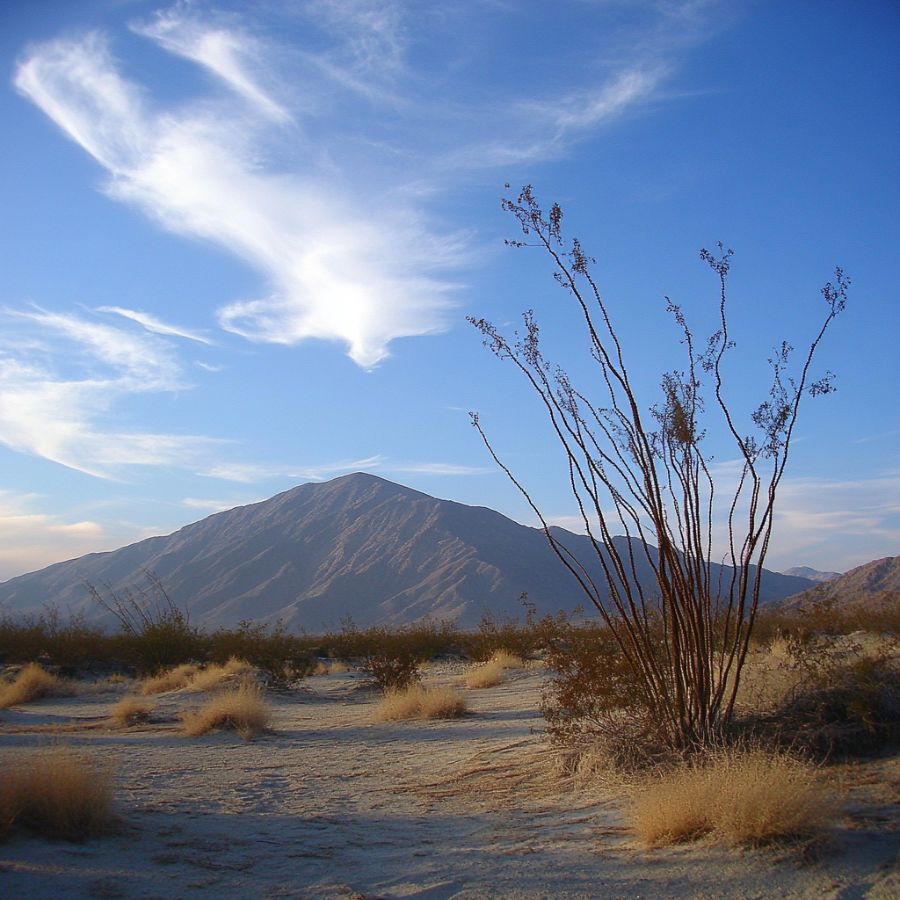
Coyote Peak is located in the rugged landscape of Humboldt County, California. This region, part of the Franciscan Complex, is rich in metamorphic and sedimentary rocks, creating the perfect environment for mineral deposits.
Pyrite here often appears as shiny, golden cubes embedded in shale and other host rocks. You can start their search along exposed rock outcrops and creek beds, where erosion gradually reveals hidden specimens.
Bring a rock hammer and chisel to carefully extract well-formed crystals from tougher formations. While exploring, you might also spot quartz veins running through the area.
If your kids constantly ask “What’s this rock?”, this guide finally gives you an answer you don’t have to Google later. Quick photos, simple descriptions, and rugged pages make ID’ing rocks fun instead of frustrating.
🔍 Fast visual matching—no geology background needed
💦 Wipe-clean pages made for creeks, beaches & dirt
📚 Simple explanations for beginners of all ages
🌄 Great for California hikes, creek beds & camping trips
Cascade Canyon
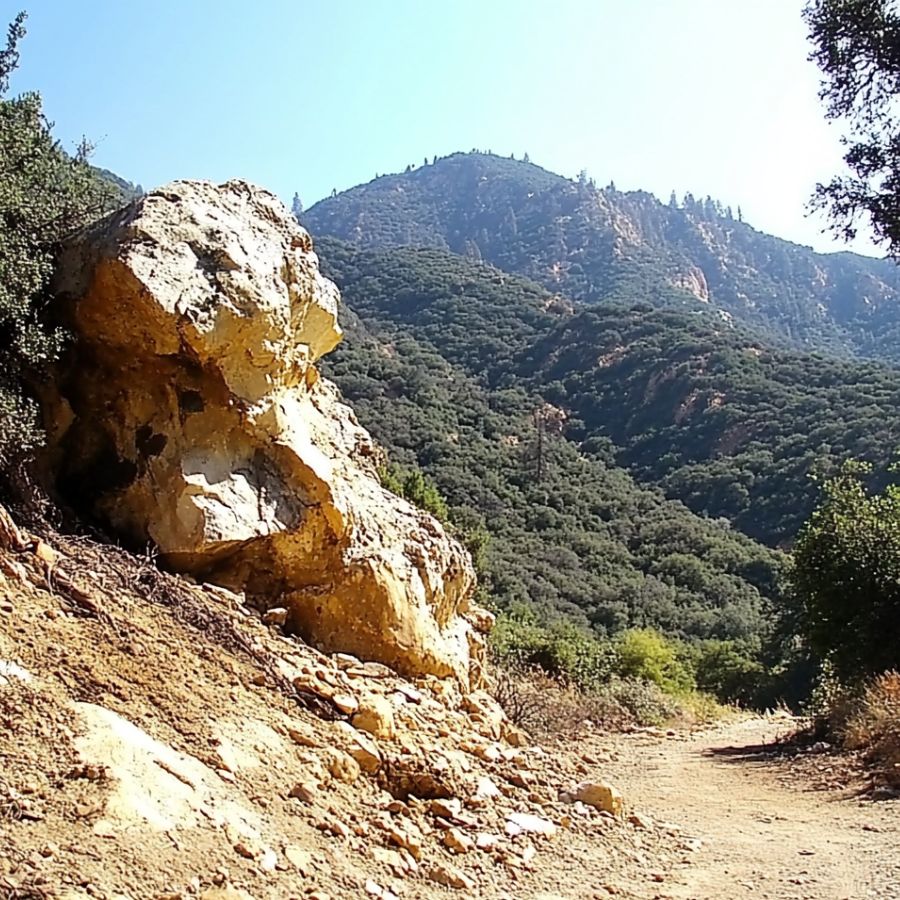
Deep within the San Bernardino Mountains, Cascade Canyon is a mineral-rich area famous for its striking geological formations. Here, pyrite forms in quartz veins and within the region’s metamorphic rock layers.
The canyon’s steep cliffs and rocky terrain make it a challenging but exciting place for rockhounding.
To find pyrite, look for exposed rock faces where weathering has revealed mineral deposits. Small caves, crevices, and dry streambeds are excellent places to search. Some specimens may even still be attached to quartz or iron-stained rocks.
Besides pyrite, you might stumble upon garnets, epidote, and even small traces of gold. The canyon is remote, so rockhounds should bring sturdy boots, water, and the right tools for digging and breaking rocks.
Leona Heights
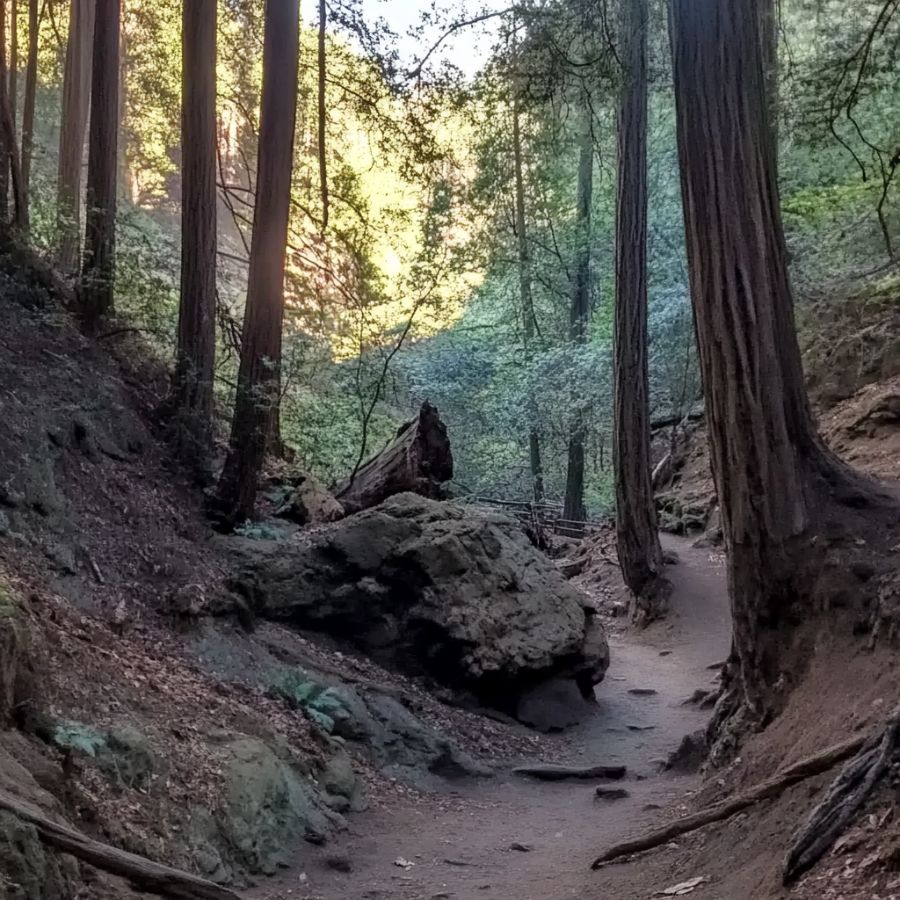
Tucked into the eastern hills of Oakland, Leona Heights is a surprising urban gem for mineral hunters. This small but geologically fascinating area was once home to iron and sulfide mining, which left behind mineral-rich rock formations.
Pyrite is one of the standout finds here, often appearing in large, brassy clusters within dark shale.
For the best chances of finding pyrite, explore areas near Leona Heights Park, particularly where old mining activity has disturbed the ground. Keep an eye out for rust-colored rocks; iron oxidation often hints at nearby pyrite deposits.
A short hike through the park’s trails offers a scenic adventure, with occasional glimpses of the San Francisco Bay. While collecting, be cautious of loose rock formations, and always bring a small bag to carry out your finds.
Iron Mountain Mine
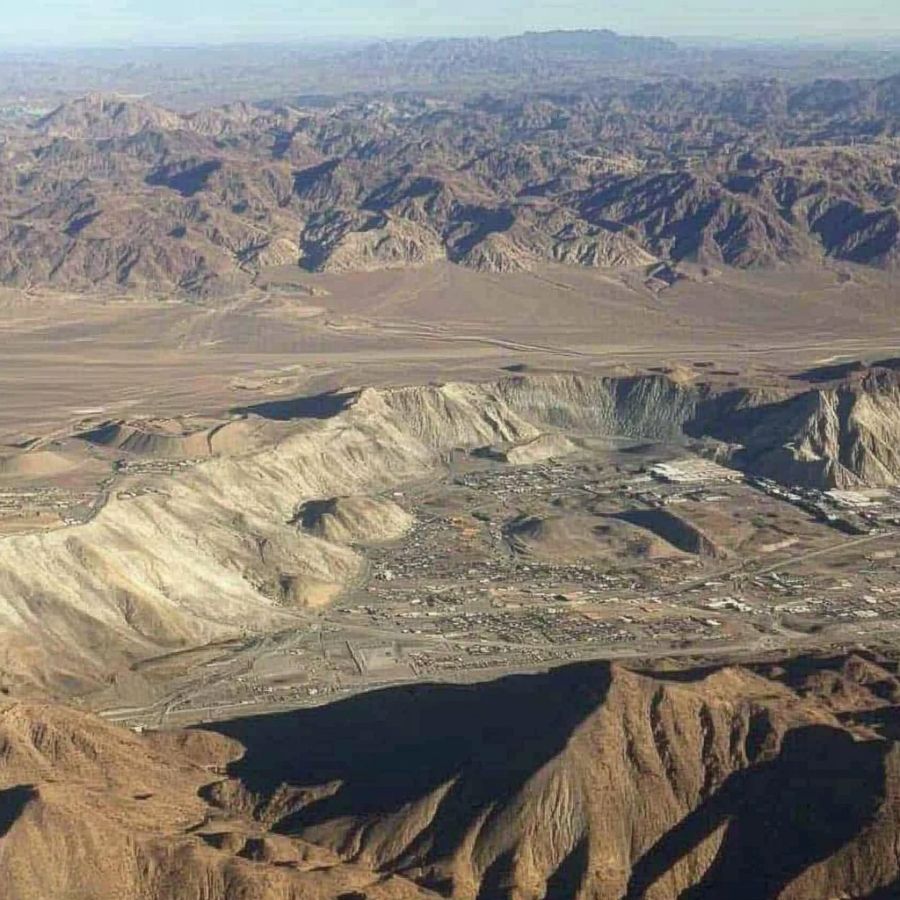
Iron Mountain Mine in Shasta County is one of California’s most famous mining sites, known for its extreme mineralization and history of heavy metal extraction. While the area is environmentally sensitive due to past mining pollution, nearby rockhounding sites still hold excellent pyrite specimens.
Pyrite here often occurs in well-formed cubic crystals, sometimes with striking iridescent surfaces. Some pieces may also be coated with colorful oxidation, creating a rainbow effect.
Search near tailings piles and old rock exposures where mining activity disturbed the ground. These areas offer loose rock, making it easier to collect samples without extensive digging.
Klamath Mountains
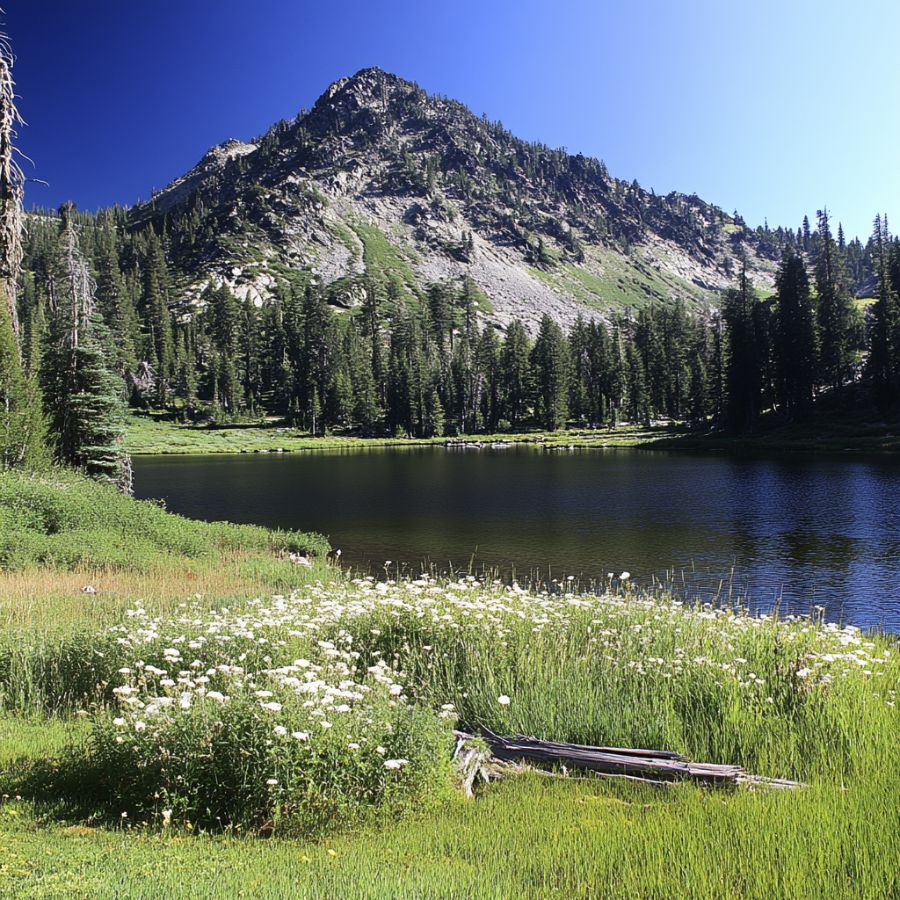
The rugged Klamath Mountains are home to some of the state’s best pyrite deposits, often found within metamorphic and igneous rocks.
Riverbeds and eroded slopes are great places to search for pyrite. Look for glimmering gold-colored flecks in loose gravel, as they often indicate larger formations nearby.
Many collection areas require hiking through dense forests and along rocky streams, providing an immersive outdoor experience. While exploring, you might also come across serpentine, jade, and other interesting minerals.
Places Pyrite has been found by County
After discussing our top picks, we wanted to discuss the other places on our list. Below is a list of the additional locations along with a breakdown of each place by county.
| County | Location |
| Trinity | Corona de Oro Mine |
| Siskiyou | Scott Bar Mines Inc. |
| San Bernardino | Alvord Mine |
| Shasta | Delta Consolidated Mine |
| El Dorado | Cothrin Mine |
| El Dorado | Unnamed Quartz-Ti Occurrence |
| Shasta | Jensen Group |
| El Dorado | Ben Bolt |
| Shasta | Dog Creek Mountain |
| El Dorado | Big X Mountain |
| Shasta | Centerville |
| El Dorado | Claussenius |
| San Bernardino | Argus |
| San Bernardino | Alvord Peak |
| San Bernardino | Argus Range |
| Shasta | Dog Creek Mining District |
| El Dorado | Deer Creek Mining District |
| San Bernardino | Alvord District |
| Humboldt | Coastal Range |
| San Bernardino | Soda Mountains |
| San Bernardino | Silver Lake Mining District |
| Humboldt | Hoopa |
| Trinity | Marysville |
| Trinity | New River Mining District |
| Trinity | Salmon Mountains |
| Siskiyou | Liberty Mining District |
| Humboldt | Copper Bluff Mine |
| Trinity | High Grade and Teressa Prospect |
| Trinity | Sherwood Mine |
| San Bernardino | B-Site, Blue Bell Mine |
| San Bernardino | Alvord Mountain |

